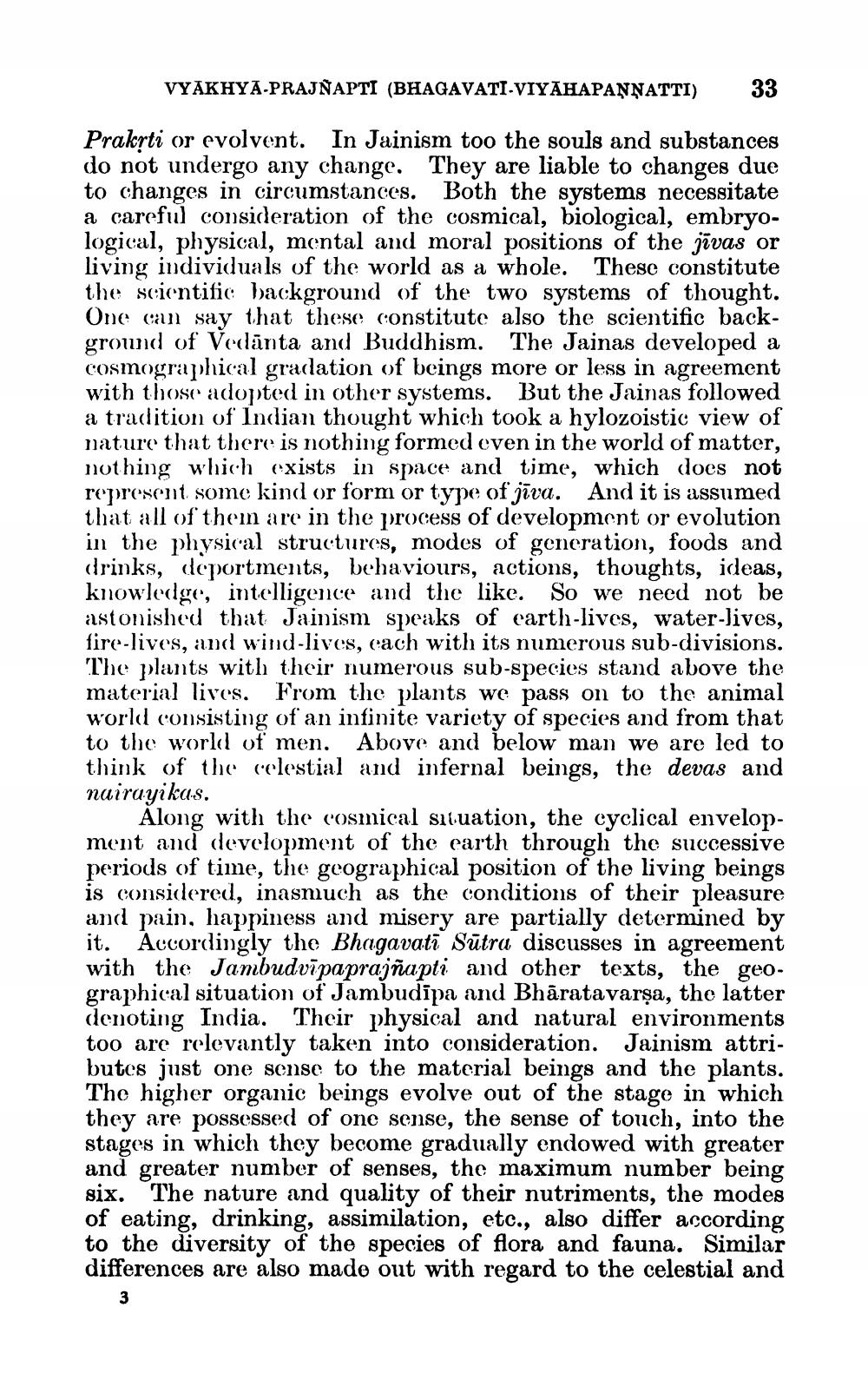________________
VYAKHYA-PRAJNAPTI (BHAGAVATI-VIYAHAPANNATTI)
Prakrti or evolvent. In Jainism too the souls and substances do not undergo any change. They are liable to changes due to changes in circumstances. Both the systems necessitate a careful consideration of the cosmical, biological, embryological, physical, mental and moral positions of the rivas or living individuals of the world as a whole. These constitute the scientific background of the two systems of thought. One can say that these constitute also the scientific background of Vedānta and Buddhism. The Jainas developed a cosmographical gradation of beings more or less in agreement with those adopted in other systems. But the Jainas followed a tradition of Indian thought which took a hylozoistic view of nature that there is nothing formed even in the world of matter, nothing which exists in space and time, which does not represent some kind or form or type of jīva. And it is assumed that all of thein are in the process of development or evolution in the physical structures, modes of generation, foods and drinks, deportments, behaviours, actions, thoughts, ideas, knowledge, intelligence and the like. So we need not be astonished that Jainism speaks of earth-lives, water-lives, fire-lives, and wind-lives, each with its numerous sub-divisions. The plants with their numerous sub-species stand above the material lives. From the plants we pass on to the animal world consisting of an infinite variety of species and from that to the world of men. Above and below man we are led to think of the celestial and infernal beings, the devas and nairayikas.
Along with the cosmical situation, the cyclical envelopment and development of the earth through the successive
riods of time, the geographical position of the living beings is considered, inasmuch as the conditions of their pleasure and pain, happiness and misery are partially determined by it. Accordingly the Bhagavati Sūtra discusses in agreement with the Jambudvīpaprajñapti and other texts, the geographical situation of Jambudipa and Bhāratavarşa, t denoting India. Their physical and natural environments too are relevantly taken into consideration. Jainism attributes just one sense to the material beings and the plants. The higher organic beings evolve out of the stage in which they are possessed of one sense, the sense of touch, into the stages in which they become gradually endowed with greater and greater number of senses, the maximum number being six. The nature and quality of their nutriments, the modes of eating, drinking, assimilation, etc., also differ according to the diversity of the species of flora and fauna. Similar differences are also made out with regard to the celestial and




